The Cork Bark Elm Bonsai is truly a sight to behold. It boasts a unique and captivating appearance that sets it apart from other bonsai trees. One of its most distinguishing features is its thick, corky bark, which develops as the tree matures. This textured bark not only adds charm but also gives the tree a rugged and aged look, as if it has weathered the test of time.
Key Takeaways:
- Proper care is essential for maintaining the health of your Cork Bark Elm Bonsai.
- The Cork Bark Elm Bonsai features a unique appearance with its textured bark and glossy leaves.
- It thrives in both full sun and partial shade, but protection from frost is important during the winter months.
- Water the bonsai on observation, ensuring the entire root-mass is thoroughly watered.
- Regular fertilization during the growing season promotes healthy growth and vigor.
Appearance of Cork Bark Elm Bonsai
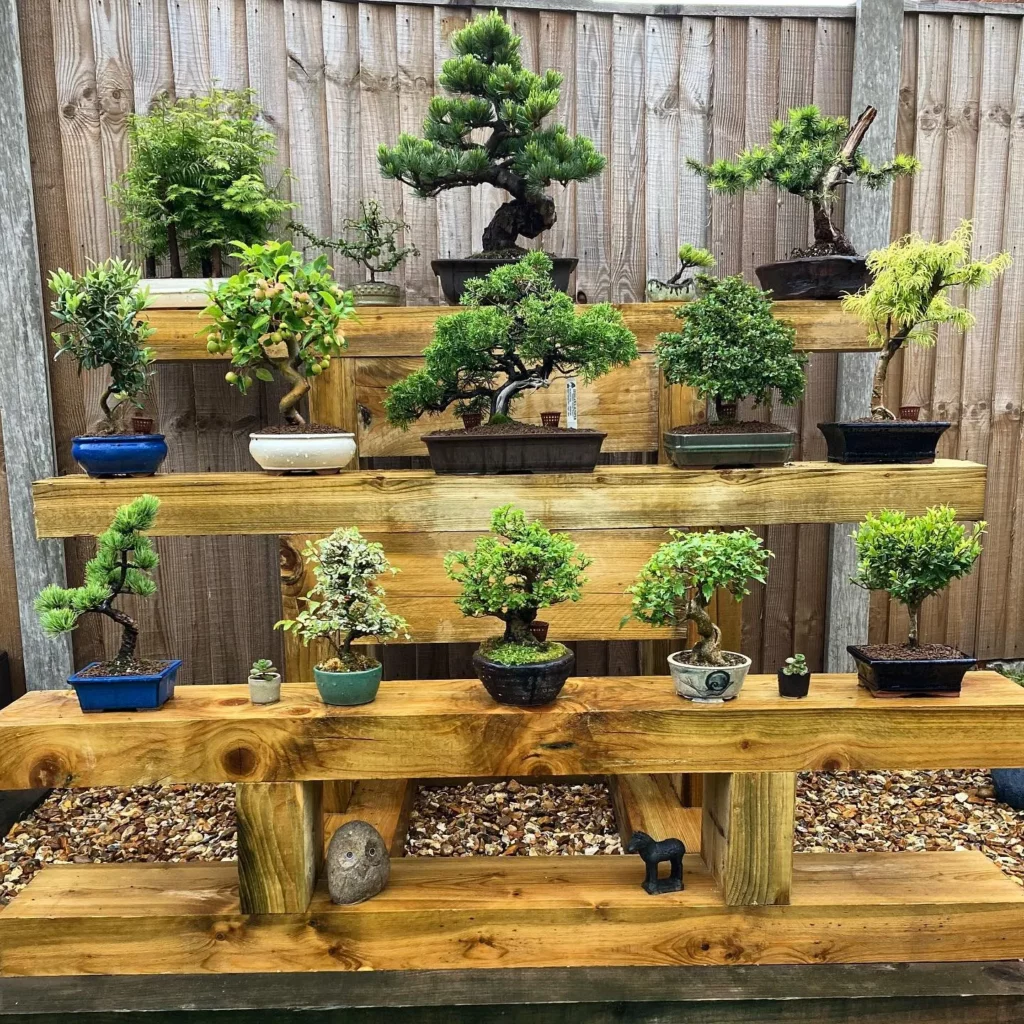
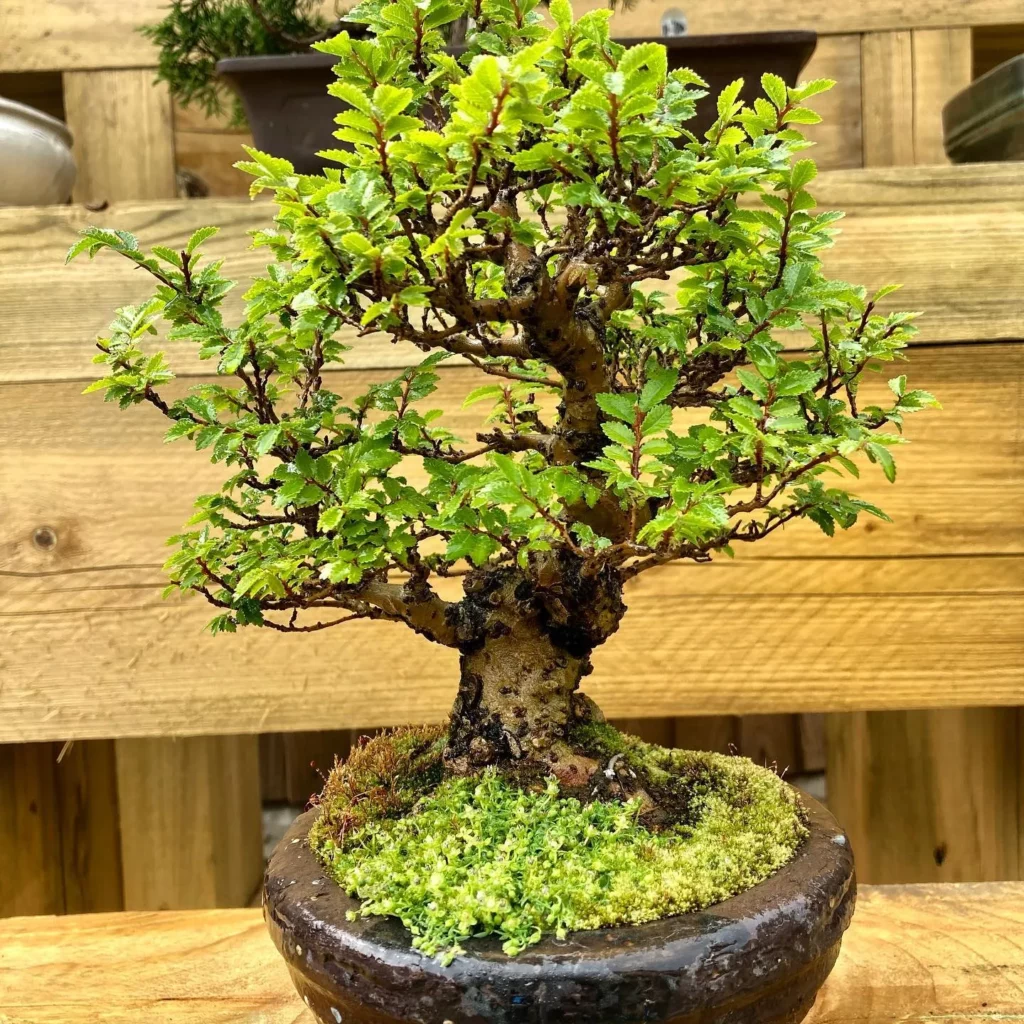
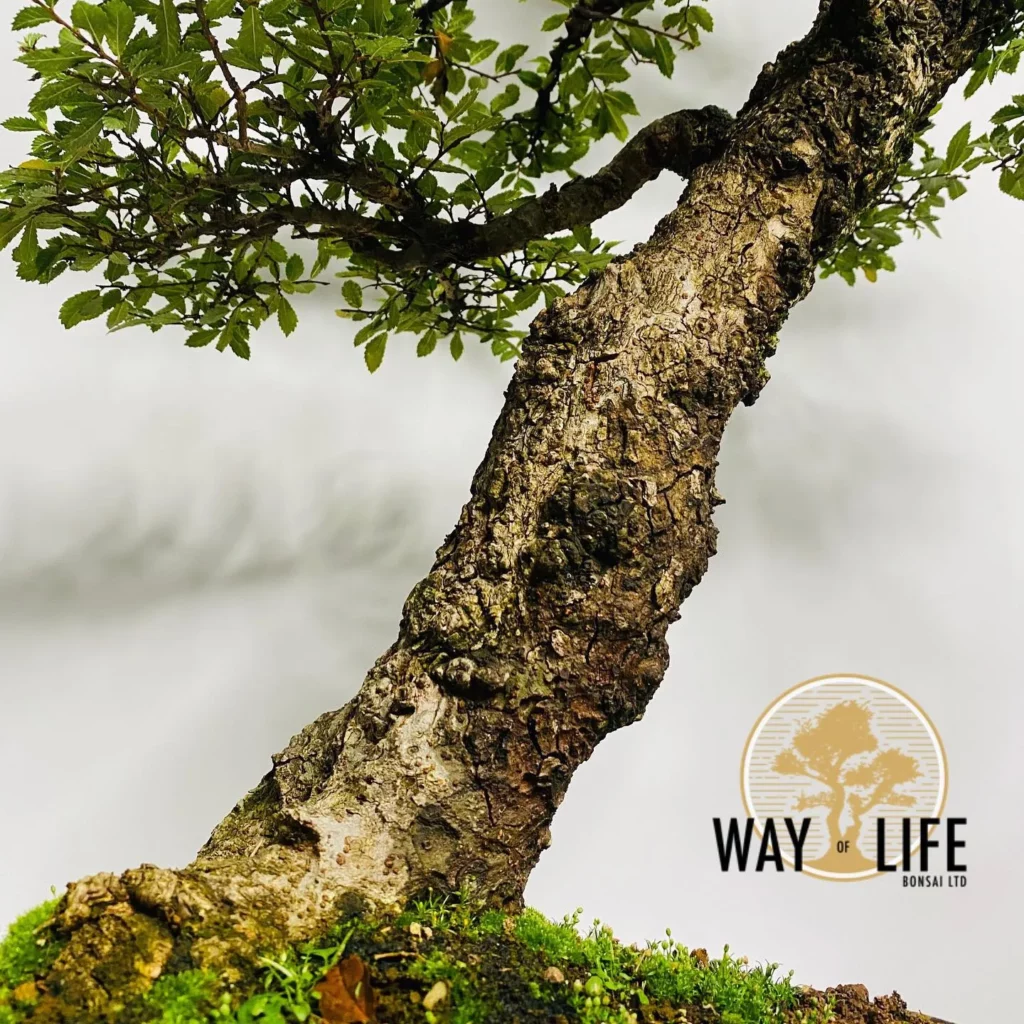
The leaves of the Cork Bark Elm Bonsai are small and glossy, creating a beautiful contrast against the rough, textured bark. These vibrant green leaves add a touch of elegance and vibrancy to the overall aesthetic of the tree. When the leaves change color in the fall, they transform into a stunning array of warm tones, further enhancing the visual appeal of the bonsai.
In terms of its form, the Cork Bark Elm Bonsai typically grows in an upright and compact manner. Its branches extend in a balanced and harmonious way, creating a pleasing silhouette. With the right care and maintenance, this bonsai tree can develop into a magnificent work of art, showcasing its unique appearance and captivating beauty.
Light Requirements for Cork Bark Elm Bonsai


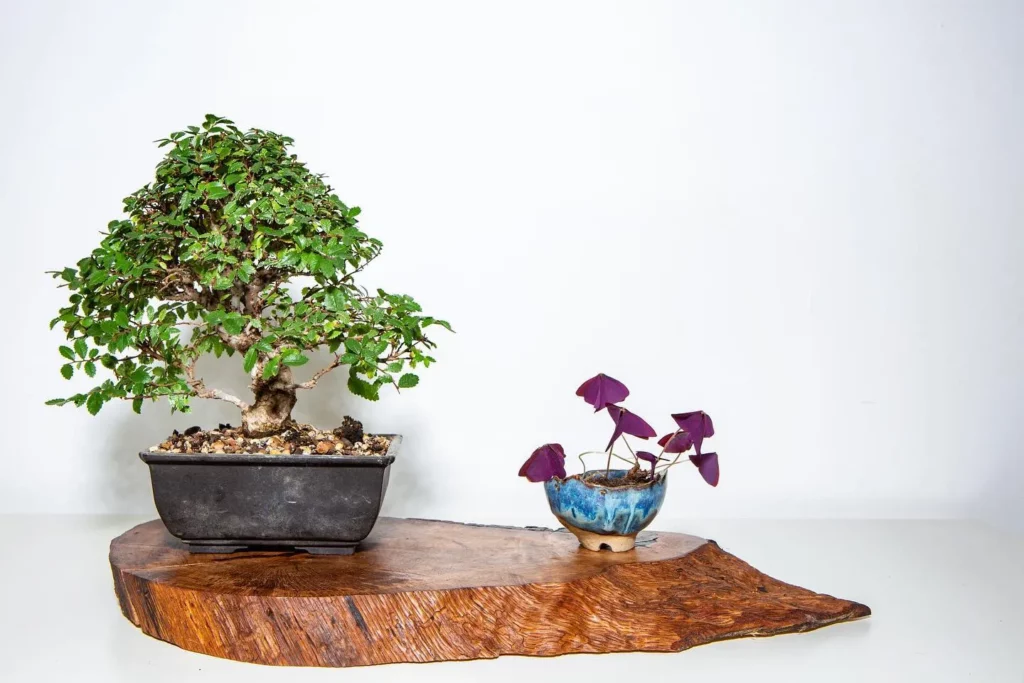
The Cork Bark Elm Bonsai thrives in both full sun and partial shade. To ensure the healthy growth of your bonsai, it is important to provide adequate sunlight. If you live in a temperate climate, you can keep your Cork Bark Elm Bonsai outdoors throughout the year. However, during the winter months, it is recommended to bring the bonsai into a cool, frost-free room.
The amount of sunlight required by your Cork Bark Elm Bonsai may vary depending on its specific origin. Bonsai trees imported from different regions may have different light requirements. Therefore, it is essential to determine the origin of your bonsai and adjust the amount of sunlight accordingly.
Lighting Tips for Your Cork Bark Elm Bonsai:
- Place your bonsai in an area that receives direct sunlight for at least 4-6 hours a day.
- If you notice that your bonsai is getting too much direct sunlight and the leaves are turning yellow or scorched, provide some shade during the hottest part of the day.
- During the winter months, when your bonsai is indoors, place it near a window that receives ample sunlight.
Watering Cork Bark Elm Bonsai
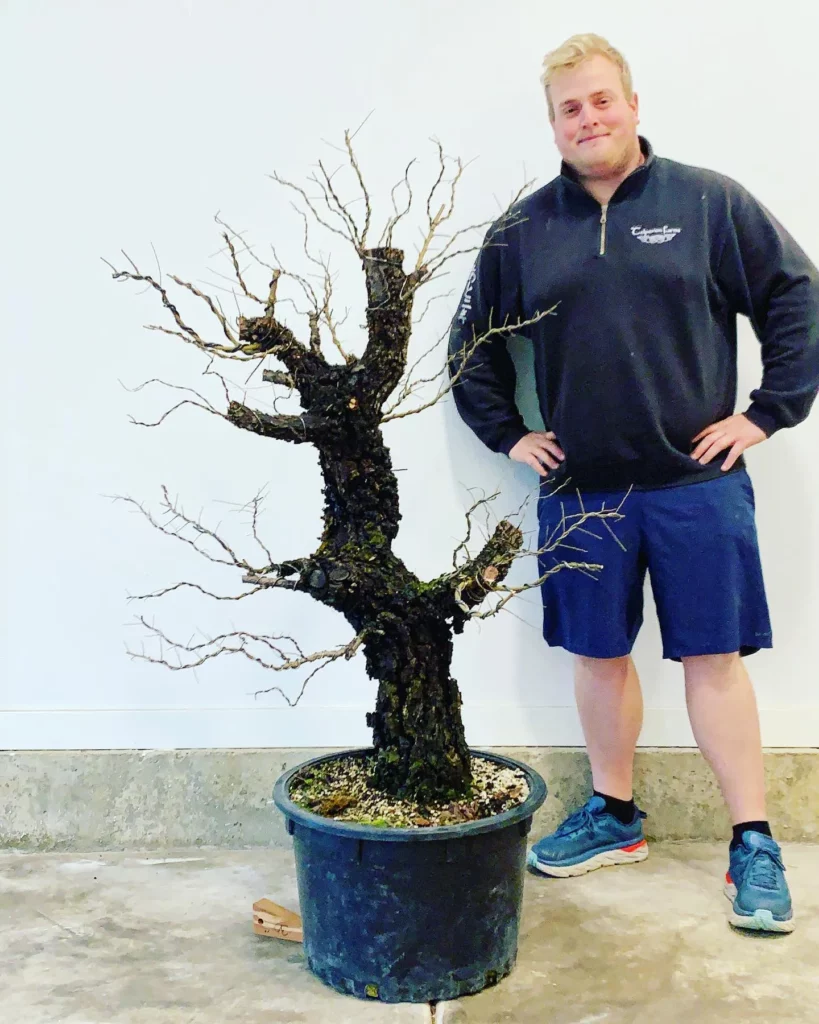
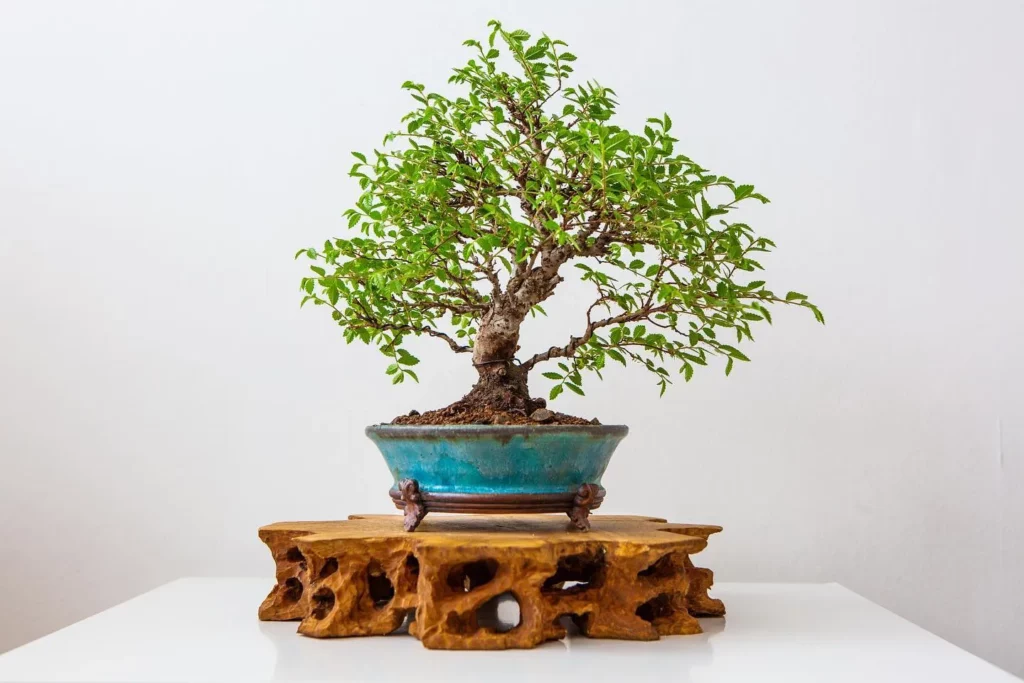
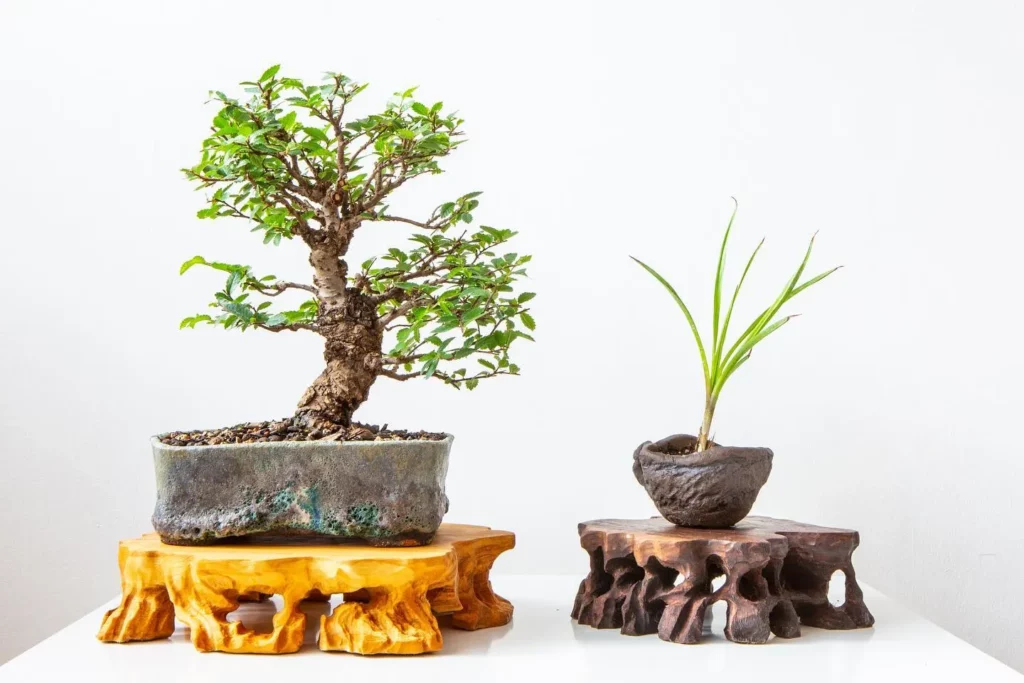
Proper watering is essential for maintaining the health and vitality of your Cork Bark Elm Bonsai. To ensure optimal moisture levels, it’s important to follow the right watering techniques.
Determining the Right Time to Water
Instead of adhering to a strict watering schedule, it’s recommended to observe the soil moisture levels before watering your bonsai. Check the topsoil with your finger and water only when it feels dry to the touch. This will help prevent both under-watering and over-watering, which can be detrimental to the tree’s health.
Thoroughly Watering the Bonsai
When watering your Cork Bark Elm Bonsai, it’s important to ensure that the entire root-mass receives water. This can be achieved by thoroughly soaking the soil until water drains from the drainage holes at the bottom of the pot. This practice helps to flush out any accumulated salts and ensures that all parts of the root system receive the right amount of moisture.
Preventing Waterlogging and Drought
Avoid allowing your bonsai to sit in water for extended periods, as it can lead to waterlogging and root rot. Additionally, make sure not to let the soil dry out completely, as extreme drought can cause stress and damage to the tree. Striking the right balance between waterings is crucial to maintaining the health and vigor of your Cork Bark Elm Bonsai.
Fertilizing Cork Bark Elm Bonsai
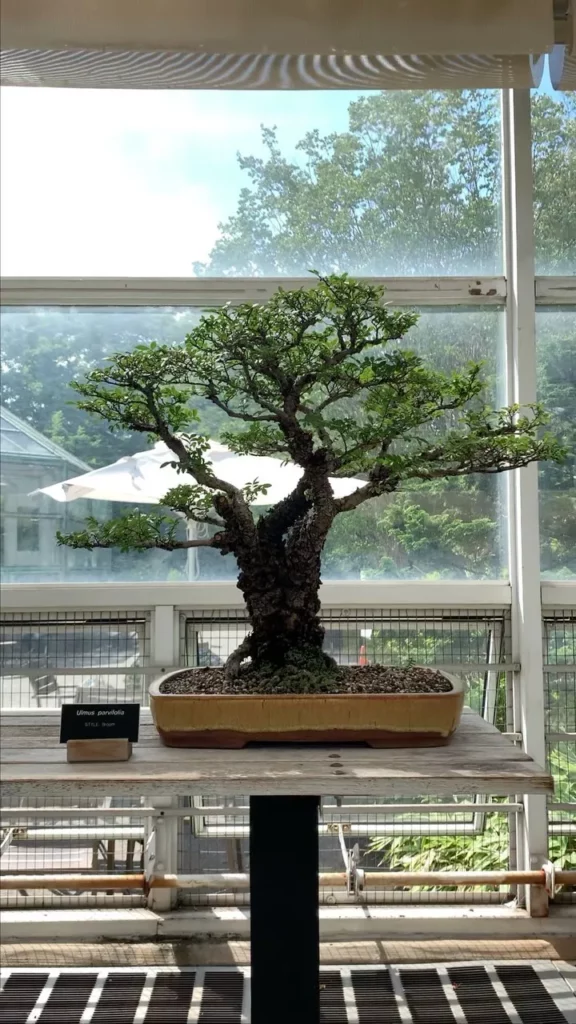
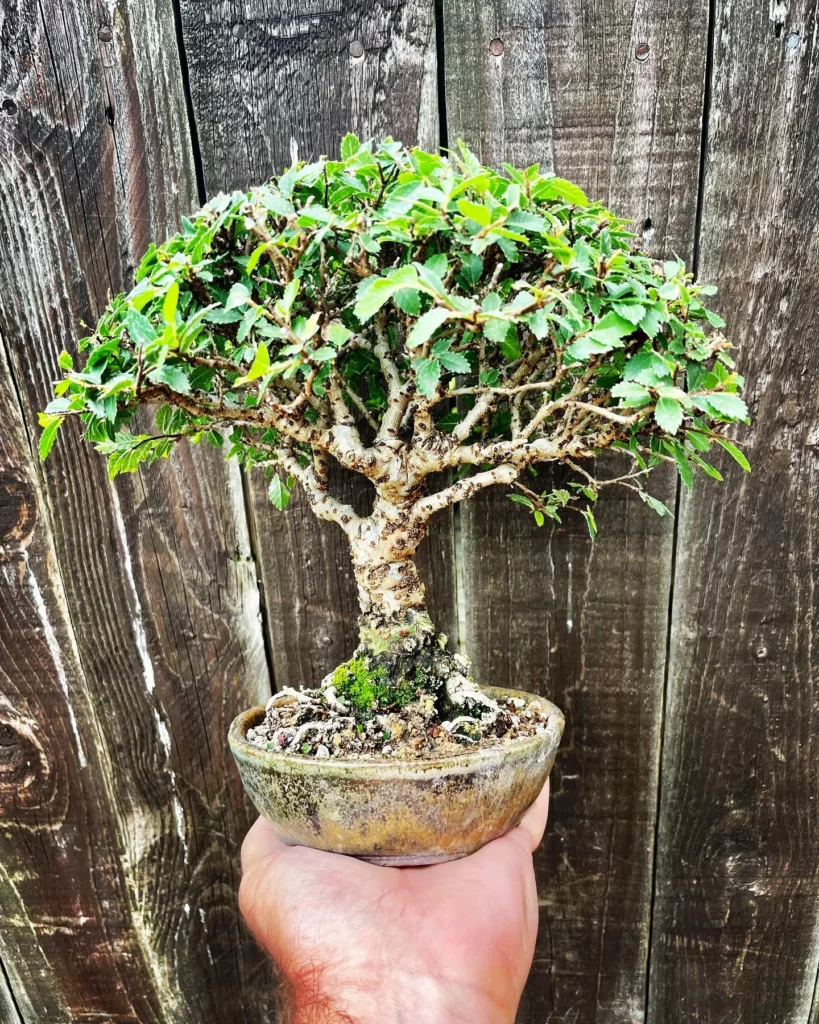
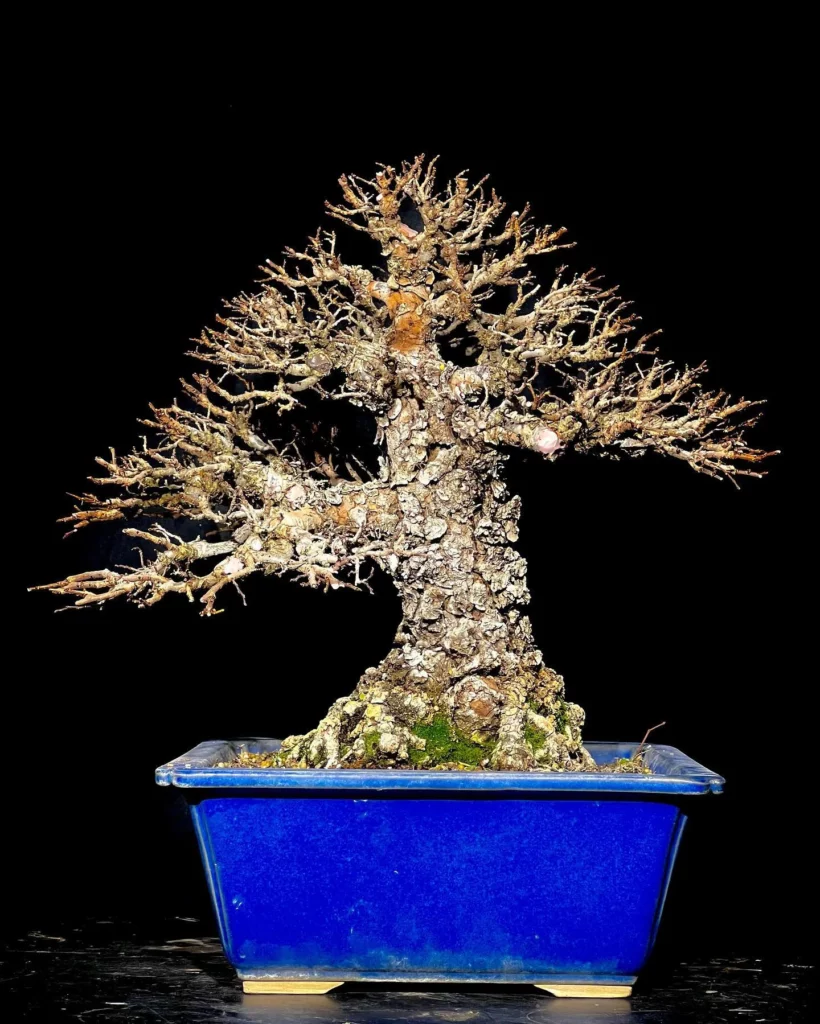
Proper fertilization is essential for the health and vitality of your Cork Bark Elm Bonsai. By providing the right nutrients, you can promote healthy growth and development in your bonsai tree.
Here are some key points to keep in mind when fertilizing your Cork Bark Elm Bonsai:
- Choose the right fertilizer: Use a well-balanced liquid chemical fertilizer or solid organic fertilizer specifically designed for bonsai trees. These fertilizers contain the essential nutrients your Cork Bark Elm Bonsai needs to thrive.
- Follow the recommended dosage: Read the instructions on the fertilizer packaging and follow the recommended dosage. Over-fertilizing can harm the bonsai, so it’s crucial to use the correct amount.
- Fertilize during the growing season: Fertilize your Cork Bark Elm Bonsai during the active growing season, typically from spring to early autumn. Avoid fertilizing during the winter months when the tree is dormant.
- Apply fertilizer evenly: Distribute the fertilizer evenly throughout the root area of the bonsai. Be careful not to concentrate the fertilizer in one spot, as it can cause root burn.
Potting Cork Bark Elm Bonsai
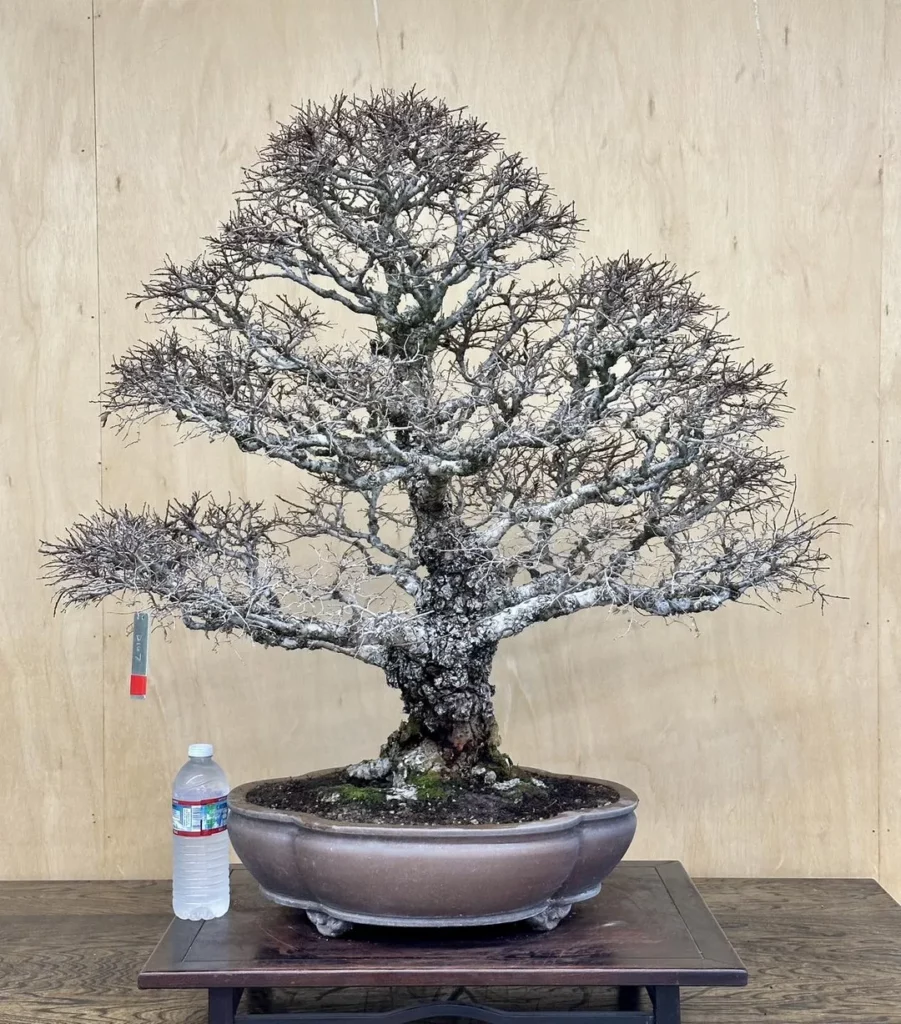
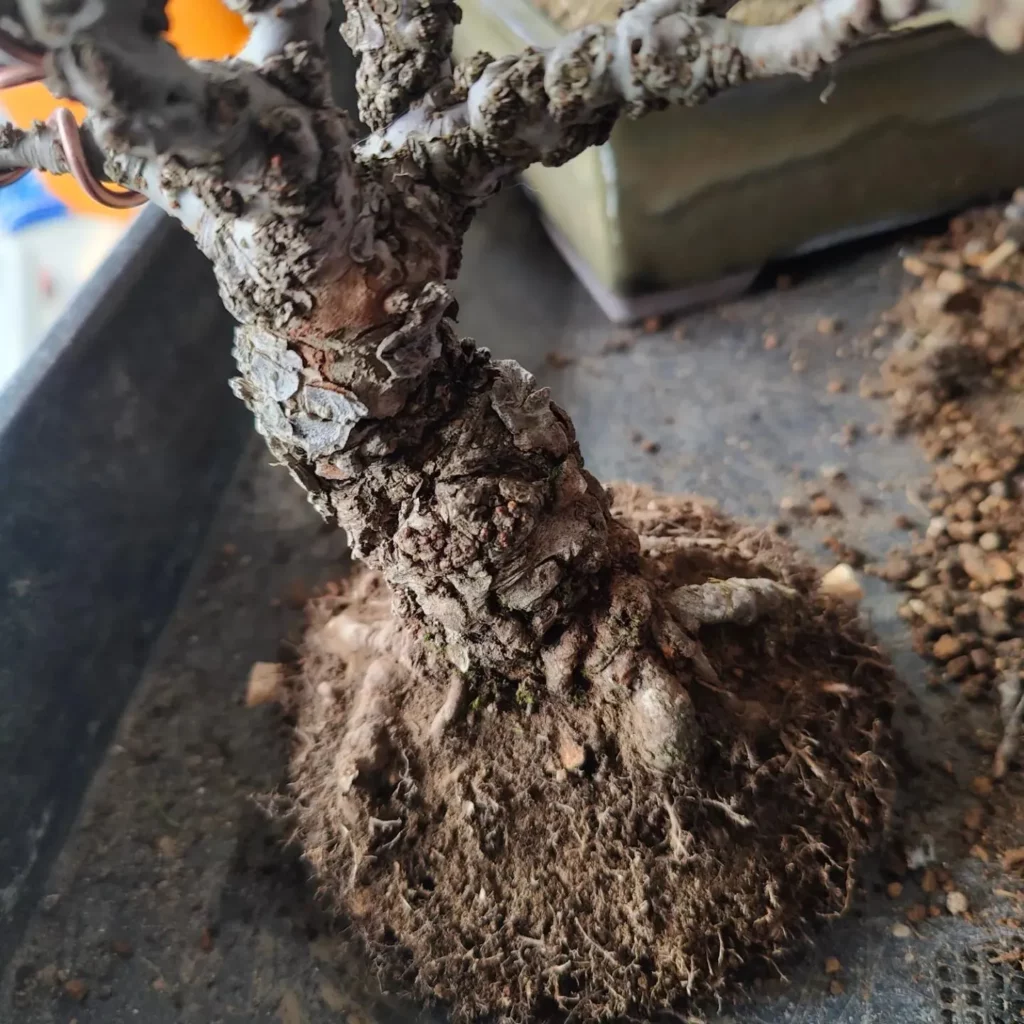
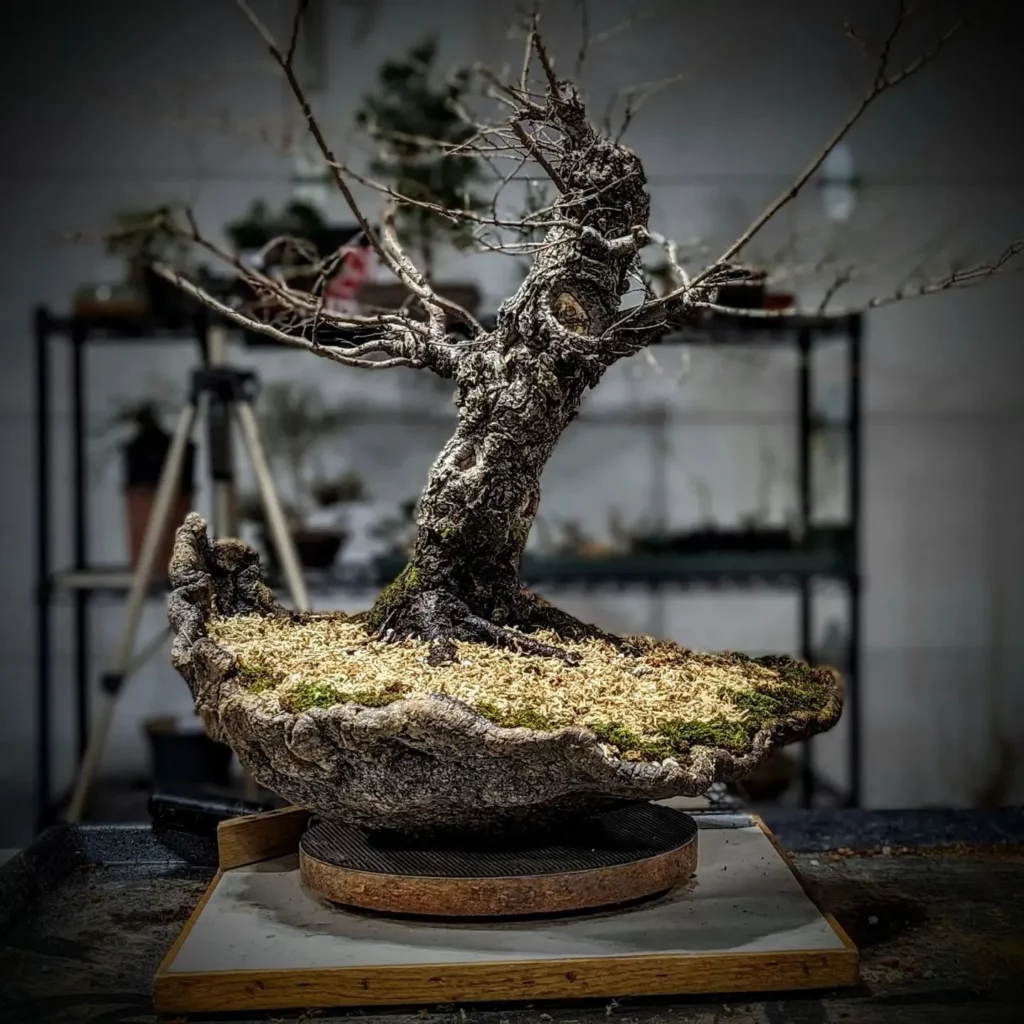
Proper potting is essential for the health and growth of your Cork Bark Elm Bonsai. Here are some key considerations to keep in mind:
- Repotting Schedule: Young bonsai trees should be repotted every two years, while older and larger trees can be repotted less frequently. Spring is the best time to repot your Cork Bark Elm Bonsai.
- Root Pruning: During the repotting process, it’s important to carefully prune the roots to encourage a well-defined nebari. The roots of this bonsai species have a tendency to grow crooked and intertwined, so extra care is needed when pruning.
- Soil Mixture: Choose a well-draining soil mixture for your Cork Bark Elm Bonsai. A standard bonsai soil mix, consisting of akadama, pumice, and lava rock, is suitable for this bonsai species.
- Pot Selection: Select a bonsai pot that is slightly larger than the current pot size to allow for growth. The pot should have drainage holes to prevent waterlogging.
Repotting Process:
When repotting your Cork Bark Elm Bonsai, follow these steps:
- Remove the bonsai from its current pot, gently untangle the roots, and trim any excessively long or damaged roots.
- Place a layer of fresh soil mixture in the bottom of the new pot.
- Position the bonsai in the pot, ensuring that it is centered and upright.
- Fill the remaining space with the soil mixture, pressing it firmly around the roots to eliminate any air pockets.
- Water the bonsai thoroughly to help settle the soil.
Propagation of Cork Bark Elm Bonsai
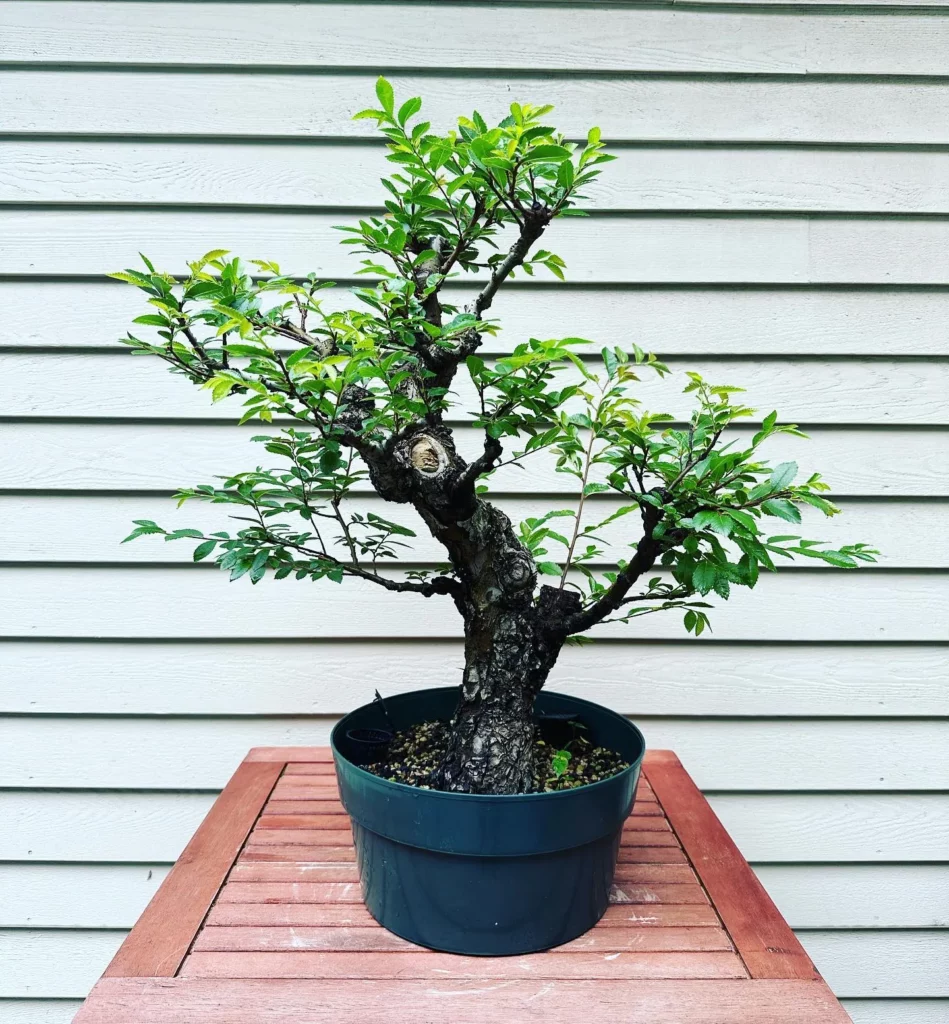
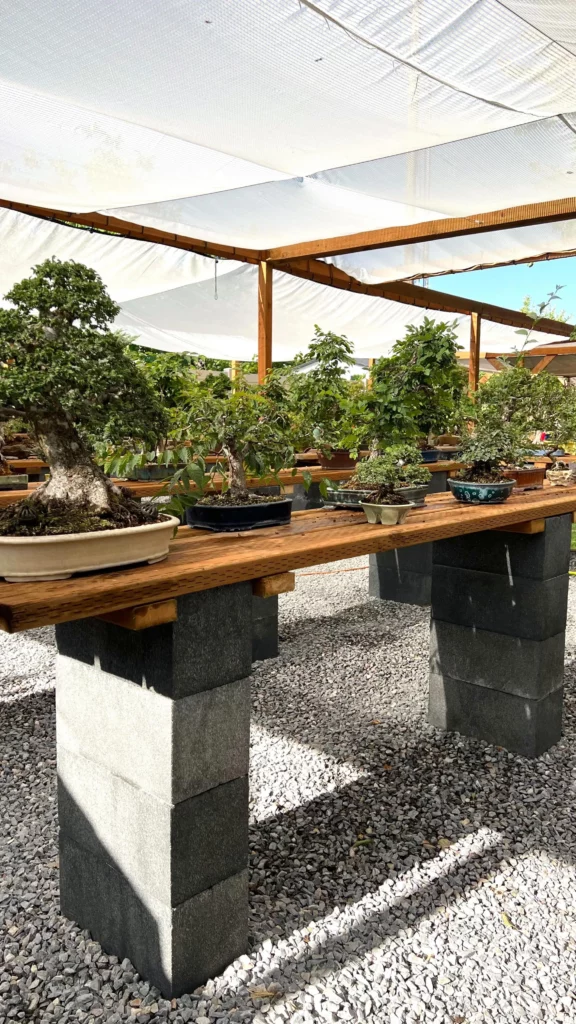

If you’re looking to expand your collection of Cork Bark Elm Bonsai, propagation is a great way to do it. This bonsai species can be easily propagated using cuttings, which has a higher success rate compared to using seeds.
Here’s what you need to know to successfully propagate your Cork Bark Elm Bonsai:
- Choose healthy branches: Select branches that are disease-free and have a good amount of foliage. These branches will serve as the cuttings for propagation.
- Prepare the cuttings: Take cuttings that are approximately 6 inches long, making sure to remove any leaves from the bottom half of the cutting. This will encourage root development.
- Rooting hormone: Dip the bottom of the cutting in rooting hormone to promote root growth. This will increase the chances of successful propagation.
- Plant the cuttings: Place the cuttings in a well-draining soil mixture, ensuring that the bottom half is buried in the soil. Mist the cuttings with water to provide moisture and cover them with a plastic bag to create a greenhouse-like environment.
- Provide the right conditions: Place the cuttings in a warm location with indirect sunlight. Keep the soil moist, but not overly saturated, to prevent rotting. Be patient and allow time for the cuttings to root and establish themselves.
Growth and Development of Cork Bark Elm Bonsai
The growth and development of the Cork Bark Elm Bonsai is a fascinating process that requires careful attention and nurturing. With its relatively fast growth rate, this bonsai species requires frequent trimming to maintain its desired shape and density. Late autumn is the optimal time for pruning, as the tree buds well from old wood after a strong pruning session. Shaping techniques such as wiring and guy wires are ideal for sculpting the branches and creating the desired artistic form.
As the Cork Bark Elm Bonsai matures, it develops a beautiful and aged appearance. The thick, corky bark becomes more pronounced and adds character to the tree’s overall aesthetic. Regular care and cultivation will allow the bonsai to continue its graceful development over time, creating a captivating centerpiece for any garden or indoor space. It’s important to note that each Cork Bark Elm Bonsai has its own unique growth pattern and attributes, making each tree truly one-of-a-kind.
Key Points for the Growth and Development of Cork Bark Elm Bonsai:
- Regular trimming and pruning are necessary to maintain shape and density.
- Buds well from old wood after a strong pruning session.
- Shaping techniques such as wiring and guy wires can be used to sculpt branches.
- The corky bark becomes more pronounced and adds character as the bonsai matures.
- Each Cork Bark Elm Bonsai has its own unique growth pattern and attributes.
Pests and Diseases of Cork Bark Elm Bonsai
While caring for your Cork Bark Elm Bonsai, it’s important to be aware of the potential pests and diseases that can affect its health. Two common pests to watch out for are spider mites and scale. These tiny creatures can infest your bonsai, especially in low humidity conditions. To control them, use appropriate pesticides and regularly spray the tree with water as a preventative measure.
It’s crucial to avoid using thinned lime-sulfur or systemic pesticides, as they can cause the bonsai to lose all its leaves. Make sure to monitor your Cork Bark Elm Bonsai regularly, looking out for any signs of pest infestation. By catching the issue early and taking proactive measures, you can prevent further damage and protect the health of your bonsai.
In addition to pests, diseases can also pose a threat to your Cork Bark Elm Bonsai. Fungal diseases and root rot can occur if the tree is overwatered or if the soil doesn’t drain properly. To avoid these problems, ensure that you water your bonsai appropriately and use well-draining soil. If you notice any signs of disease, such as wilting leaves or discoloration, take immediate action by adjusting your watering routine and applying appropriate fungicides.
FAQ
How often should I water my Cork Bark Elm Bonsai?
It is recommended to water the bonsai on observation. Wait until the topsoil is dry before watering and ensure that the entire root-mass is watered thoroughly.
When should I fertilize my Cork Bark Elm Bonsai?
The Cork Bark Elm Bonsai should be provided with ample fertilizer during the growing season. Regular fertilization promotes healthy growth and vigor in the bonsai.
How often should I repot my Cork Bark Elm Bonsai?
Repotting is necessary every two years when the tree is young. As the bonsai grows older and larger, the intervals between repotting can be longer.
Can I propagate my Cork Bark Elm Bonsai using cuttings?
Yes, propagating the Cork Bark Elm Bonsai can be done using cuttings. Cuttings have a higher success rate and are more commonly used for reproducing this bonsai species.
When is the best time to prune my Cork Bark Elm Bonsai?
Pruning is best done in late autumn, and the tree buds well from old wood after strong pruning. Shaping with wiring and guy wire techniques is ideal for this bonsai species.
What are the common pests and diseases that affect Cork Bark Elm Bonsai?
The Cork Bark Elm Bonsai is susceptible to pest infestations, particularly spider mites and scale, especially in low humidity conditions. Regular monitoring and appropriate pesticides can help control these pests.




